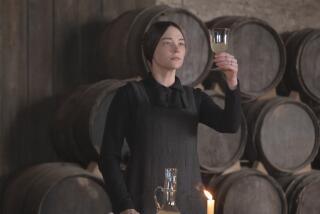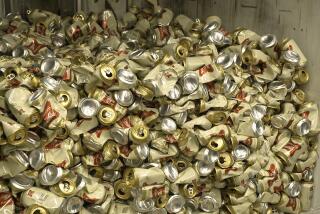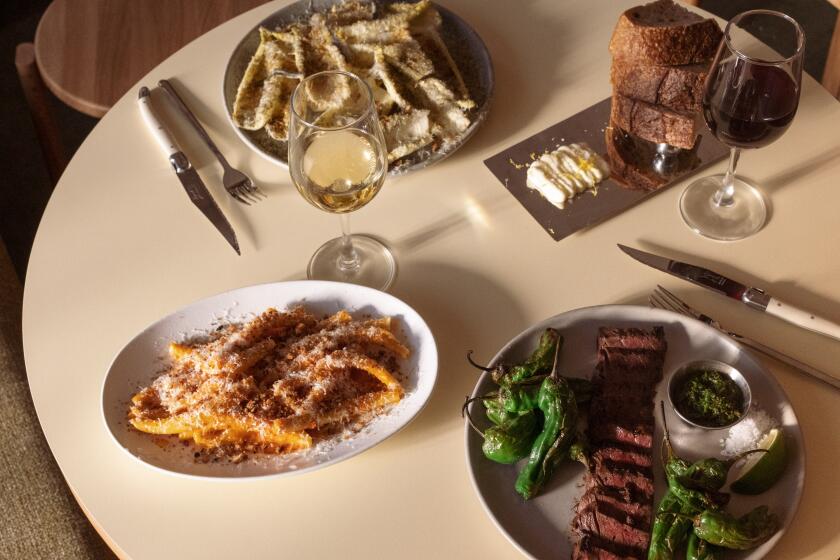Output Above Average : Adequate 1984 Champagne Crop
EPERNAY, France â Champagne lovers around the world can breathe a sigh of relief. The producers say this yearâs crop may be smaller than 1983âs huge harvest, but output is still above average and the quality looks reasonable.
Despite poor weather, the quality of the grapes was far better than expected and it should be an âhonorable year,â Andre Enders of the Champagne Trade Assn. said.
The association expects to produce between 190-195 million bottles of bubbly, well below last yearâs bumper 300 million bottles but enough to boost stocks and satisfy rising demand.
Producers still shudder at the memory of 1980 and 1981 when bad weather caused two very poor crops. Sales had to be limited and prices raised.
But two exceptional years followed, both in quantity and quality, and growers began to build up stocks to ensure such a situation would not occur again.
Vines have been cultivated among the rolling hills of Champagne since early Roman times and while the recent bad harvests rocked the industry, it has survived worse in the past.
The spread of the crippling vine disease phylloxera at the start of this century almost wiped out the industry, which was saved only by replanting with American vines, which were originally from France.
There are many sparkling wines made around the world but only one can legally claim the name Champagne. This must come from a strictly defined and tiny region in Northern France between Reims, Chalons-sur-Marne and Chateau-Thierry.
Today there are around 18,000 growers on the 60,000 acres, of whom about 4,000 work full-time cultivating vines.
Most growers do not make their own Champagne but sell their grapes to 120 Champagne houses, which make and blend them into the well-known, golden liquid that is drunk to celebrate special events or just because people like the taste.
The process is a long and costly one that has not changed significantly since the 18th Century when legend has it that a Benedictine monk, Dom Perignon, discovered how to capture the bubbles.
The grapes are hand-picked at harvest time, which starts in late September and lasts for 10 to 15 days. They are then rushed to be pressed and fermented in the huge stainless steel tanks that have replaced the old wooden vats.
Louis-Marc dâHarcourt, director of Veuve Clicquot, one of the leading Champagne companies, explained how the fermentation rooms were now much smaller and clinical-looking.
Veuve Clicquot used to have 16,000 coal-fired vats before, so the amount of labor needed to look after the tanks is now considerably less, he said.
After the young wine is bottled and racked to make it clear, each firmâs experts meet to decide what blend of wines best match their own distinctive makes.
More sugar is then added to help the second fermentation process, which gives the wine its famous bubbles.
Around two-thirds of all the Champagne produced is consumed in France, but the domestic market is now stagnating while exports are once again taking off, Enders said.
The export market really started to boom at the turn of the 19th Century when two-thirds of the output was exported to the Imperial Court of the Russian czars.
After the Russian Revolution, the United States, then at the height of the height of the Roaring â20s, took over as the leading export market until Prohibition struck.
Until this year, Britons led the list of foreign Champagne lovers, but were nudged out of first place by the United States, where almost nine million bottles were drunk in the first eight months of 1984, nearly 40% up on the same 1983 period.
Britain followed closely, boosting its purchases by 17% to 8.5 million bottles.
One bottle of Champagne in three is sold abroad, bringing in $310 million in export revenue last year, an amount that is expected to rise.
But the French continue to make everyone else look like beginners when it comes to popping Champagne corks. They managed to get through 75 million bottles between January and September and the typical French Champagne drinker imbibes an average of three to four bottles a year.
Here is a quick guide on how to enjoy a bottle of Champagne if you are celebrating a birth, a holiday, a special occasion or nothing in particular.
Hold a slightly chilled Champagne bottle firmly in one hand. Take off the foil cap and wire muzzle with the other. Hold the bottle at a slight angle and gently rotate it away from the cork. Wait for the discreet pop as the cork comes out and pour with care.
More to Read
Eat your way across L.A.
Get our weekly Tasting Notes newsletter for reviews, news and more.
You may occasionally receive promotional content from the Los Angeles Times.










